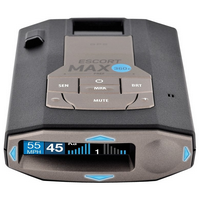Buy Radar Detectors would like to wish you and your loved ones a happy and safe Labor Day! Our offices will be closed for the day on Monday, September 2, 2013. If you need assistance please send us an e-mail, visit our Facebook page or give us a call after 8 AM EDT Tuesday, September 3, 2013 at (800) 584-1445. From all of us at Buy Radar Detectors, please stay safe while traveling, remember to keep your radar detector on and watch your speed.
You have no items to compare.
Same Day Shipping! Orders placed before 5 p.m. EST ship same day!
General
-
Happy Fourth of July 2013 From Buy Radar Detectors!
Buy Radar Detectors wants to wish everyone a safe and happy Fourth of July 2013! To celebrate, our offices will be closed for the day on Thursday, July 4, 2013. If you need assistance please send us an e-mail, visit our Facebook page or give us a call after 8 AM EDT Friday, July 5, 2013 at (800) 584-1445. Please stay safe while traveling, remember to keep your radar detector on and as always, watch your speed.
-
Whistler launches new CR Series radar detectors for 2013
Whistler is well known for its radar detectors, not just for their value, but for the large selection of models available as well. The company has a reputation for offering a wide variety of them, historically offering up to twice as many models in its product line as Beltronics and Escort combined. But times change, and now Whistler is taking a different route for 2013, consolidating their entire product line of windshield mount radar and laser detectors into just five new models: the CR65, CR70, CR75, CR80 and CR85. Let's take a look at each one.
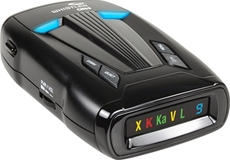 CR65
CR65
This is the base model, with the most basic, standard features included in the entire series. The CR65 detects all radar bands and all types of laser guns used for speed detection, including LIT Truspeed® S, Laser Ally™ and Laser Atlanta® Stealth Mode with 360° Maxx coverage. It also detects POP mode.The feature set includes three city modes, highway mode, Traffic Flow Signal Rejection (TFSR), VG-2 detection, SWS alerts, tone alerts, Alert Priority, Stay Alert, auto quiet mode, setting saver and Auto Off. Of course, the CR65 sports Whistler's signature blue periscope LEDs, a visual cue that is practically an icon on their dashmount radar detectors. For a basic feature set on the low end, that's not bad at all.
As a base model, the CR65 has an icon display with a numeric LED included on the right side to add a variable digit to the static icons to indicate signal strength. The display brightness is somewhat adjustable with dim and dark settings.
This model essentially replaces the Whistler XTR-265 and other similar entry level models, such as the XTR-145. The CR65 currently sells for $59.95.
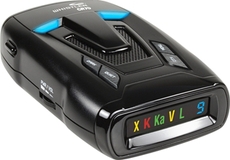 CR70
CR70
The CR70 has all the same features as the base model with the exception of the audio alerts. The CR65 uses tone alerts, while the CR70 offers RealVoice™ technology to alert you to radar and laser threats. The inclusion of this feature adds about $10 more to the price, but if you prefer a detector that talks instead of beeps, it's a small price to pay for the satisfaction.Other than the additional feature and a slight cosmetic difference in the design on top of its shell, the CR70 and CR65 are the same basic radar detector. The CR70 replaces the XTR-335 (and possibly the XTR-435 as well) and currently sells for $69.99.
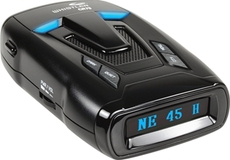 CR75
CR75
On the high end of the low end in the series is the CR75. It has the same features of the two previous models plus a couple of tweaks to the standard features, one additional feature and one important change.In addition to RealVoice™, the CR75 offers selectable tones. The Auto Off feature included in the other models is also now selectable. The key change is the display. It swaps the icon display used in the other models for a blue OLED text display, allowing for more versatility.
It also has one additional feature that sets it above the CR65 and CR70 - a digital compass. This puts the CR75 almost in the Whistler Pro category, but not quite. The CR75 replaces the XTR-555 and, with the inclusion of a compass, to some extent it may even serve to replace the battery powered XTR-420, although the CR75 itself is not cordless. The current price of the CR75 is $109.99.
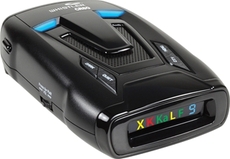 CR80
CR80
The CR80 enters the low end of the high end, high performance Whistler models, although as radar detectors go, it certainly isn't low end. It does go back to the same 7 segment icon display used on the CR65 and CR70, however it adds other features normally found on top-of-the-line Whistlers.The CR80 takes the standard features found on the lower end models and tweaks a couple of them. It offers selectable bands and three selectable filters. Auto Off is not selectable, but the CR80 is compatible with the Intellicord, which does give it some extra versatility in the power department. One unique feature not found on the lower-end models is selectable laser. The CR-80 is also low-emission, which means that it is virtually undetectable to VG-2 and Spectre radar detector detectors. The CR-80 replaces the Pro-68SE. The current price is $119.99.
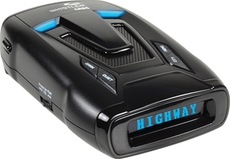 CR85
CR85
At the very top of the CR Series is the Whistler CR85. In addition to the standard features found on all of the other models, the CR85 combines the tweaks and add-ons found in the CR75 with some of those in the CR80 and tops them all off with a couple of its own.The CR85 brings back the blue OLED display found on the CR75, as well as selectable tones and selectable Auto Off. It also has RealVoice™. It does not, however, have a compass. From the CR80, it has the selectable laser, selectable bands, the three selectable filters, VG-2 and Spectre undetectability and Intellicord compatibility.
In addition, the CR85 adds two features previously found only on the highest-end Whistler XTR and Pro models: the ability to automatically dim the display and Signature ID for radar (RISD) and laser (LSID). The latter was available only on the XTR-690SE, XTR-695SE and Pro 78SE. Although the CR85 officially replaces only the Pro 78SE, both the XTR and Pro Series are now discontinued, so for all practical purposes the CR85 replaces all three. The CR85 sells for $159.99.
It's worth noting that both the CR80 and CR85 have a different antenna that is more sensitive and will improve the range of detection. That alone may be a reason to choose one of those models over the others in this series.
As for what's in the box, The CR65, CR70 and CR75 each include a windshield bracket, straight power cord and an owner's manual. The CR80 and CR85 add a dash pad and a hardwire kit in case you want it installed.
As noted above, the Whistler XTR and Pro Series radar detectors (with the exception of the Pro 3600) are going away, including the cordless models. With the introduction of the new CR Series, Whistler effectively consolidated eleven radar detectors into five new models. Choice is good, and there are a lot of radar detectors out there to choose from. Now that the CR Series is available, Whistler seems to have made shopping for a radar detector a just little simpler, which, considering all the choices available, may be optimal.
-
2013 Beltronics Radar Detector Comparison
During the past year Beltronics refreshed their line of radar detectors. Since Buy Radar Detectors is an Authorized Beltronics Dealer, we carry them all. To make shopping for a Beltronics radar detector as easy as possible, we created a set of resources to help you find the one you need, such as articles and reviews, product videos and even an online comparison tool.
Below is a chart of the Beltronics Radar Detectors currently available and some of their key features, from the dashmounted Pro Series to the installed and concealed RX45. You can compare the current models in this chart to our 2011-2012 Beltronics Radar Detector Comparison Chart for a first hand look at the key differences between the older and new models. You can also compare them to our 2013 Escort Radar Detector Comparison Chart.
Beltronics Model GPS Voice Alerts Display Undetectable RX45 • Graphical/Text STi Magnum • Text • Pro 500 • • Text Pro 300 • Text Pro 200 • Text Pro 100 • Text STiR Plus • • Text • -
2013 Escort Radar Detector Comparison
As an Authorized Escort Dealer, Buy Radar Detectors is proud to carry their completed product line of radar/laser detectors. There are a number of models to choose from, and with all of the features available, choosing the right radar detector for your needs can become a bit overwhelming. Fortunately, we have have tools available to help you figure it all out. There are videos, articles and product comparisons between specific makes and models.
Here is a quick comparison chart that lists a few key features of Escort's current models. You can compare the new models to the older, 2011-2012 Escort Radar Detector Comparison Chart to note any improvements to the current line.
The chart below includes all the current Escort radar detectors we currently offer, from the high performance, cordless Solo S3 and the in-dash, undetectable 9500ci to the state-of-the-art, compact Passport iQ that looks and feels like a typical GPS device. These models and their features are organized into a simple grid for quick reference.
Escort Model GPS Voice Alerts Display Undetectable Passport 8500ci • • Text Passport 8500ci Plus • • Text 9500ci • • Text • Passport iQ • • Graphical Passport Qi45 • Text Redline • Text/Graphic • Passport 9500ix • • Text Solo S3 Text Passport 8500 X50 Black (Blue Display) Text Passport 8500 X50 Black (Red Display) Text -
Driving under the speed limit? You may want a radar detector
Recently a Maryland woman was ticketed for not speeding on Interstate 95. The offense? She was doing 63 in a 65mph zone in the left lane.
The officer cited her for failing to keep right while driving two miles below the speed limit. Two miles. The woman, who said she was forced to slow down because of windy conditions on the road, was stunned. She filed a complaint. The response from Maryland police? Take it to court.
While there is no question that driving within the speed limit is certainly lawful, and the woman should not have received a ticket for following the law, the issue wasn't really about that at all. The real issue is that she was doing it in the left lane.
Now, this is certainly a topic that can spark heated debate, and usually does. On the one hand, the left lane is considered the passing lane, while the right lane is for slower traffic. Drivers going under the speed limit are required to use the right lane and allow faster traffic to pass them on the left. There is also a minimum speed that must be maintained while driving on a highway. In Maryland, driving in the left lane is allowed as long as the driver is not blocking the flow of traffic or going 10mph under the posted speed limit. If other drivers are moving faster and want to pass, Those going slower should move to the right.
However, there is another side to the argument as well, just as legal and valid. The passing lane is for passing slower traffic at the posted speed limit. It is not a license for speeding. Passing slower vehicles is fine, as long as you are not exceeding the limit yourself. If you exceed the speed limit to pass another vehicle, you are breaking the law. In the case of the driver in Maryand, she was only two miles per hour under the the posted speed limit while in the left lane, which is well within the 10 mile per hour margin required by Maryland to lawfully drive on the left. In other words, although she was in the passing lane, technically she was still within the law.
By issuing the citation, the officer sent a clear message to this driver: if you're not speeding, you may get a ticket. Yes, as strange as it may sound, it seems that these days you can be penalized for breaking the law, or you can be penalized for keeping it.
This is why it is important to know when you are being watched.
I have been told by critics of radar detectors that these devices only encourage drivers to break the law and enable them to speed. While there are lead-footed drivers who do buy radar detectors to evade speed traps, that isn't the only reason to have one. It isn't why I have a radar detector. I have a better reason to own one. I want to know who is watching me, how they are watching, when they are watching and where they are.
Public safety, traffic enforcement, call it what you will. It's still monitoring and surveillance, and that bothers me. Sure, we need good law enforcement to protect the public, and I have no problem with a marked patrol car on the road or at the side of it in plain view, to deter crime and provide the assurance of protection to law abiding citizens.
But secretly scanning me with radar, lasers and infra-red cameras without my knowledge is just a little uncomfortable. It's too big brother. I want to know what they are doing and why. Radar/laser detectors and traffic camera detectors are useful because they keep me alert to such activities and help me watch who is watching me.
Am I overreacting? Am I being too paranoid? With the prospect of using drones on our own citizens, is my concern about traffic surveillance over the top?
Before you answer my questions, ask the woman in Maryland what she thinks. After all, she was trying to obey the law, and she still got a ticket. If she had a radar detector in her vehicle, is it possible she would have been alerted that she was being watched so she could either match the speed limit or move into the right lane in time and avoid a citation? Perhaps, perhaps not. At least she would know she was being watched.
As a law-abiding citizen, wouldn't you want to be alerted to a potential problem before it occurs so you can take steps to correct it and stay within the law?
This is why it is important to know when you are being watched.
-
The Cobra iRadar S-Series unveiled!
In a previous article we took a look at a brand new model in the Cobra iRadar system to be released in May of this year, the iRadar Atom. There is, however, another iteration of iRadar coming right on its heels, one that places the iRadar system in a different category of radar detectors altogether. It's the iRadar S-Series, and it adds another dimension to the product line. Let's take a quick look at it now.
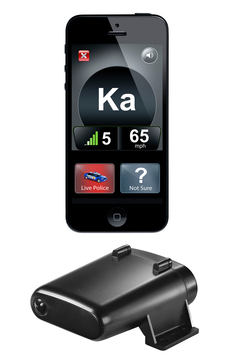 The iRadar S200R
The iRadar S200R
The iRadar S-Series takes the entire iRadar detection concept to the next level - concealed radar detectors. The S-Series (S meaning "Stealth"?) is the first concealed series of detectors utilizing the Cobra iRadar detection system. The first model in the series, the iRadar S200R, is designed to install directly into your vehicle, under the hood, sight unseen.Of course, that by itself is nothing new; companies such as Beltronics, Escort and Whistler have been manufacturing internally wired, concealed radar detectors for years. Detection systems such as the Beltronics RX45, the Escort 9500ci and the Whistler Pro 3600 are all well known examples. There's nothing innovative there. Or is there?
There is. Indeed, there is one thing that sets the new S-Series apart from the rest of them. The iRadar S200R is the first under-the-hood, concealed radar detector to use Bluetooth® technology to connect directly with your smartphone and access an Internet database to exchange information with a million other radar detectors on the road.
Okay, let's rewind a bit. iRadar? What is it? In a nutshell, it's a web-based network that shares updates and real-time information on known speed traps, red light cameras, speed cameras and other traffic alerts in your area with every driver and radar detector actively connected to it. It sounds a lot like the Escort Live! system, and it is. For details, read our article on the new iRadar Atom.
Now back to the program. According to Cobra, the new iRadar S200R becomes completely invisible when it's installed under the hood of a vehicle. Now, to me, invisible means that it can't be seen with the naked eye, and if it is installed under the hood of a vehicle, more than likely it won't be visible, literally. However, it doesn't necessarily mean the S200R is undetectable, especially if someone is specifically trying to sense it with a radar detector detector. In fact, Cobra doesn't say that it uses any actual stealth technology at all to avoid detection, it only claims that you can't see it when installed. In other words, don't expect it to be an STi Magnum, because it isn't one. It's just hiding itself from an ocular view.
With that in mind, it still sounds like a cool device. A concealed radar detector that connects wirelessly to your iPhone or Android smartphone, interfaces with an app and networks in real-time with a million other radar detectors on the road does take radar detection technology up a notch. Whether it lives up to the classic Cobra hype, time will tell. But it does sound cool and it's worth checking out when it arrives, which is supposed to be sometime in August, 2013. Manufacturer suggested retail price: $299.95.
Subscribe to this blog for the arrival of the new Cobra iRadar S200R at Buy Radar Detectors!
-
Cobra to launch the iRadar Atom in May 2013
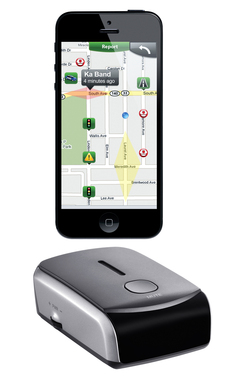 As we reported earlier, Cobra made several new product announcements for 2013 at the Consumer Electronics Show in January. One of these was the unveiling of a new addition to the Cobra iRadar series of radar detectors, the iRadar Atom. The company previewed the new device along with other entries in its new product line-up, including the soon-to-be-launched Cobra SPX Radar Detectors, due out this April.
As we reported earlier, Cobra made several new product announcements for 2013 at the Consumer Electronics Show in January. One of these was the unveiling of a new addition to the Cobra iRadar series of radar detectors, the iRadar Atom. The company previewed the new device along with other entries in its new product line-up, including the soon-to-be-launched Cobra SPX Radar Detectors, due out this April.The Atom is based on Cobra's iRadar system, which combines a radar detector with a smartphone app to allow users to share detection alerts with one another in real time. It is essentially the same basic concept as the Escort Live! system. Both systems work by connecting a radar detector to either an iPhone or Android smartphone running a specialized app to communicate with an Internet database to report and receive data on traffic enforcement activities and threats in the area. This data is shared with other drivers also connected with the system, creating a virtual network of real-time radar and laser detection across the continent.
Both systems do essentially the same thing, with one difference. The Escort Live! system relies on an external, modular type of connection to create an interface between the detector and the smartphone, while the iRadar integrates the wireless interface internally into the detector itself. There are advantages to each design, however when it comes to installation and portability, the iRadar has a slight edge.
There have been a couple of iterations of the Cobra iRadar, each improving on the last. The original iRadar was launched in 2010, beating Escort to the punch by roughly a year, and was fairly well received. After Escort Live! was launched, Cobra updated their own system with the iRadar 200, which according to Cobra, became wildly popular.
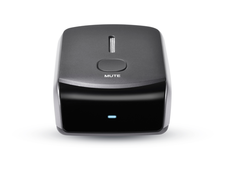 The iRadar Atom
The iRadar Atom
Now Cobra is about to introduce its latest version, the iRadar Atom. Cobra is touting it as the smallest and most powerful radar/laser/camera detection system they have ever developed, and the most compact radar detector on the market. Cobra claims the new Atom is 35% smaller in size than their other models in the iRadar series. The first model in the series came in two versions: the iRadar 100 (iPhone) and the iRadar 105 (Android). Each was a sleek, slim device measuring 1.15 in. x 2.92 in. x 4.22 in. According to dimensions provided by Cobra, the Atom measures 1.15 in. x 2.25in. x 3.30in. If these measurements are correct, it would indeed be one of the smallest, if not the smallest working radar detectors available today.Of course, size may be relevant, but it is what is inside the package that really counts. So let's check the feature set.
Detects all radar and laser guns. Check. This is the most basic function of a radar detector, is it not? How well it detects them remains to be seen, but at least, to some degree, Cobra has this one covered.
Provides 360 degree detection. Check. Okay, wait. 360 degree detection of what? Radar, laser or both? We are assuming it's laser here, but it isn't specifically defined on Cobra's web site, so who knows. Just to be safe, we're going with laser only.
4 City/Highway Modes. Check. These modes allow you to customize the sensitivity levels to help reduce false alerts. Another important, but standard feature that is all but expected from nearly all radar detectors worth their cost these days.
Well, those are all really basic features. That's not much to write home about at all, as radar detectors go. But that's only a third of the entire system.
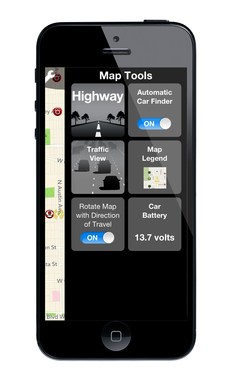 The Cobra iRadar App
The Cobra iRadar App
This brings us to the iRadar app. This is a free app that is downloaded to the second device in the system, your iPhone or Android™ smartphone. Once the app is downloaded, it connects and communicates with the iRadar detector via Bluetooth from the smartphone. Your phone becomes part of the iRadar Atom, serving as both display and control center. Cobra recently announced plans to release version 3.1, with tweaks and new features to further improve the overall iRadar experience. The feature set provided by this app enhances the basic features of the hardware and makes the iRadar Atom - and your phone - a lot more powerful.The iRadar app provides visual alerts from the Cobra iRadar detector itself, effectively serving as a graphic interface for your radar detector, complete with a tools menu, map view, live traffic view and a car finder function. The app adds GPS capability provided by the smartphone to monitor vehicle speed, direction and location. It even monitors vehicle battery voltage. It also displays live radar and laser alerts, information and locations of red light cameras, speed cameras and speed traps. It does this utilizing the third piece of the iRadar system, Cobra's AURA™ database.
The AURA™ Database
To complete the iRadar system, Cobra created the AURA™ database, a repository of speed and red light camera notifications, live police locations and other alerts reported by users connected to the network. Access to the database allows users to exchange locations of live police speed traps, speed cameras, red light cameras, and "caution" areas such as dangerous intersections with other members of the iRadar community. According to Cobra, this online iRadar Community boasts nearly one million users, generating 40,000 reports per day.These components don't offer much protection on their own. However, when connected together, the iRadar Atom, the app and the AURA™ database combine to become one very powerful radar detection system. All things considered, the iRadar Atom may be small, but when used as intended, it can be a potentially powerful radar/laser/red light camera detector for any driver.
The iRadar Atom is expected to be available May 2013 at the manufacturer's suggested retail price of $199. Stay tuned to the Buy Radar Detectors blog for its official release.
-
Happy New Year 2013 From Buy Radar Detectors!
Buy Radar Detectors would like to wish everyone a happy and safe new year! Our offices will be closed for the day on Monday December 31, 2012 and January 1, 2013. If you need assistance please send us an e-mail, visit our Facebook page or give us a call after 8 AM EST Wednesday, January 2, 2013 at (800) 584-1445. Please stay safe while traveling, don't drink and drive, keep your radar detector on, and watch your speed.
-
Beltronics Pro 100 Review
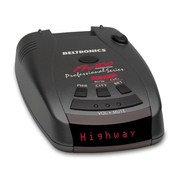 Beltronics recently revamped their Professional Series, retiring old radar detectors and introducing four new ones - the Pro 100, Pro 200, Pro 300 and Pro 500. The Beltronics Pro 100 is the base model in this series and is comparable to its predecessor, the Vector 940. In fact, it has the exact same FCC ID as the 940, which means, for all intents and purposes, it is one.
Beltronics recently revamped their Professional Series, retiring old radar detectors and introducing four new ones - the Pro 100, Pro 200, Pro 300 and Pro 500. The Beltronics Pro 100 is the base model in this series and is comparable to its predecessor, the Vector 940. In fact, it has the exact same FCC ID as the 940, which means, for all intents and purposes, it is one.As with the 940, the Beltronics Pro 100 features two city modes (standard and "No X"), to adjust the tolerance for false signals. It also has "POP" mode radar detection. Like the 940, it features an alpha-numeric display and voice alerts. Of course, it detects all the relevant radar signals and the types of laser typically in use today.
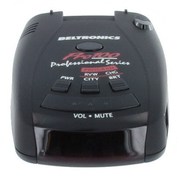 Okay, so if the new radar detector is essentially the same as the older model, why is it considered newer or better? Of course, the Vector Series was discontinued, which automatically labels the 940 "obsolete". But is it? Not really. However, it does look old compared to the slightly sleeker, sharper style of the Pro 100, which can be a rather powerful influence on those shopping for a new radar detector. After all, why buy an older looking model when you can buy a new one?
Okay, so if the new radar detector is essentially the same as the older model, why is it considered newer or better? Of course, the Vector Series was discontinued, which automatically labels the 940 "obsolete". But is it? Not really. However, it does look old compared to the slightly sleeker, sharper style of the Pro 100, which can be a rather powerful influence on those shopping for a new radar detector. After all, why buy an older looking model when you can buy a new one?Looks aside, the Pro 100 does have a few tweaks to ennhance performance. First, there is improved range. Beltronics claims the Pro 100 has "six times the range of others in its class". What that means is somewhat ambiguous, since some radar detector aficionados consider Beltronics radar detectors to be in a class all by themselves.
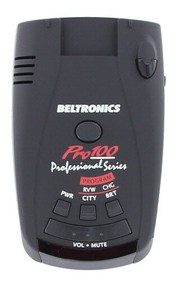 Second, according to Beltronics, the Pro 100 is factory optimized for the typical domestic US driver. And the Vector 940 wasn't? Since most of us don't work in a radar detector factory, we really can't say if such a statement is true or not, so we'll give this one to Beltronics.
Second, according to Beltronics, the Pro 100 is factory optimized for the typical domestic US driver. And the Vector 940 wasn't? Since most of us don't work in a radar detector factory, we really can't say if such a statement is true or not, so we'll give this one to Beltronics.Third, what about that new look, anyway? It's nice. Beltronics took the Vector 940 and gave it a sleek shell with a darker color and a durable, rubberized texture that makes it easy to look at and even easier to grip. That alone is a considerable improvement.
Finally, consider the source. It's Beltronics. Sure, it doesn't have all the bells and whistles of its top-of-the-line cousin, the Pro 500, but at the low end the Pro 100 rivals higher-end models produced by other radar detector manufacturers. The ultra-bright LED display with multiple brightness levels including dark mode, over 60 voice alerts, auto and manual muting, VG-2 undetectability, auto memory retention, and general ease-of-use make even the lowest-end Pro 100 a prime choice for drivers in any class. In all, whether it's a Vector 940 or a Pro 100, it's still a Beltronics.
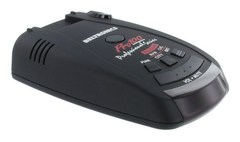 The Pro 100 does have a few minor enhancements, but there is still one clear advantage the Vector 940 has over its replacement: The price. The Vector is no longer manufactured, and as it's availability in the retail market has dwindled, so has the cost. What does this mean for consumers? A great deal. Literally. The Beltronics Pro 100 is a good radar detector at a good price, but the Vector, while still available, is almost the same thing at a real bargain.
The Pro 100 does have a few minor enhancements, but there is still one clear advantage the Vector 940 has over its replacement: The price. The Vector is no longer manufactured, and as it's availability in the retail market has dwindled, so has the cost. What does this mean for consumers? A great deal. Literally. The Beltronics Pro 100 is a good radar detector at a good price, but the Vector, while still available, is almost the same thing at a real bargain.If you're looking for a solid radar detector with great features at an equally great value, the Pro 100 is a good choice. If you're on a budget and need the performance but not the looks, The Vector 940 may be an option. Either way, they are both Beltronics, so which ever way you go, you can't go wrong.
Here is a comparison chart of all four current models in the Beltronics Professional Series.

